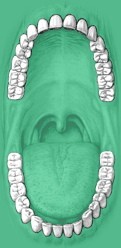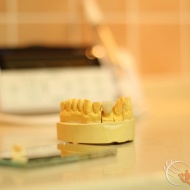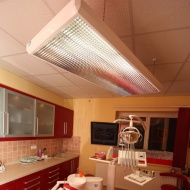If a higher degree bone-loss is diagnosed by the dentist, it is might not just a simple inflammation. In many cases there is a cyst that is growing painlessly with some yellowish liquid inside, and is continuously pressurizing the surrounding bones. In extreme cases the cyst can weaken the jaw to such a degree, that it breads due to the slightest force or even on its own. Removing the cysts requires surgical intervention and is done by an oral surgeon.
The most common kinds of oral cysts are dentigerous cysts, usually formed by impacted wisdom teeth and periapical cysts due to the infections in the pulp of the tooth. While these are benign, dentist suggests the patient to remove the cyst so that they can stop spreading the cyst to the nearby bones. The removal can usually be done in a clinic with local anesthesia, though a large oral cyst may require more extensive surgery to reconstruct any bone which has been displaced or damaged.
It is common for an oral cyst to grow next to a dead root or nerve. If a tooth nerve has died, dentists recommend a root canal, which removes the nerve. During this procedure, the dentist fills in the space formed by the removal of the nerve, which helps to prevent cyst formation.
Symptoms of a cyst
- Grayish white, foul smelling material may drain from the cyst, cheesy
- Usually a nontender, small lump beneath the skin
- Tenderness, redness, , or increased temperature of the skin over the area may lead to infection
Removal of cysts is a rather delicate job as, if the operation is not perfect, and then the cyst will be generated again. Therefore, first the gums, then the bone must be exposed under which the cyst is located.
Usually, the cyst is removed by surgery. An oral surgeon usually does this procedure under local anesthesia. The root canal treatment was renewed prior to the operation in order to prevent any further cyst formation after the cystectomy. The mucous membrane has been opened up and the thin bone lamella located above the cyst is removed. Now, the cyst is scraped with a sharp spoon. After the scraping of the cyst cavity, the wound is primarily closed. Self-removal of facial cysts at home is not recommended because the cyst will grow back if not completely removed. Chances of infection, bleeding, and other complications increase for people who remove dermoid cysts themselves, especially since the person may not be able to differentiate between a harmless growth and other, more serious skin growths.




